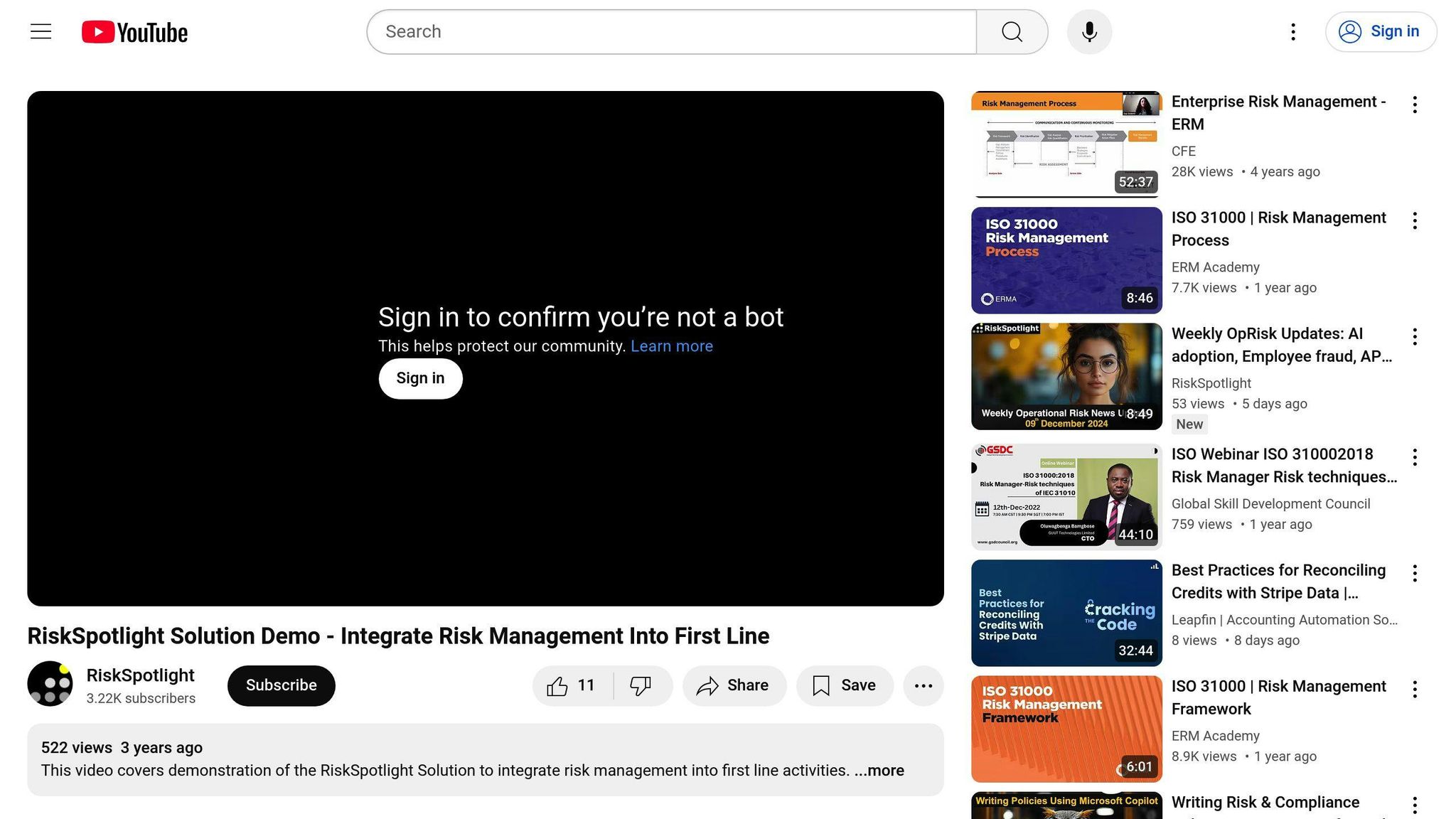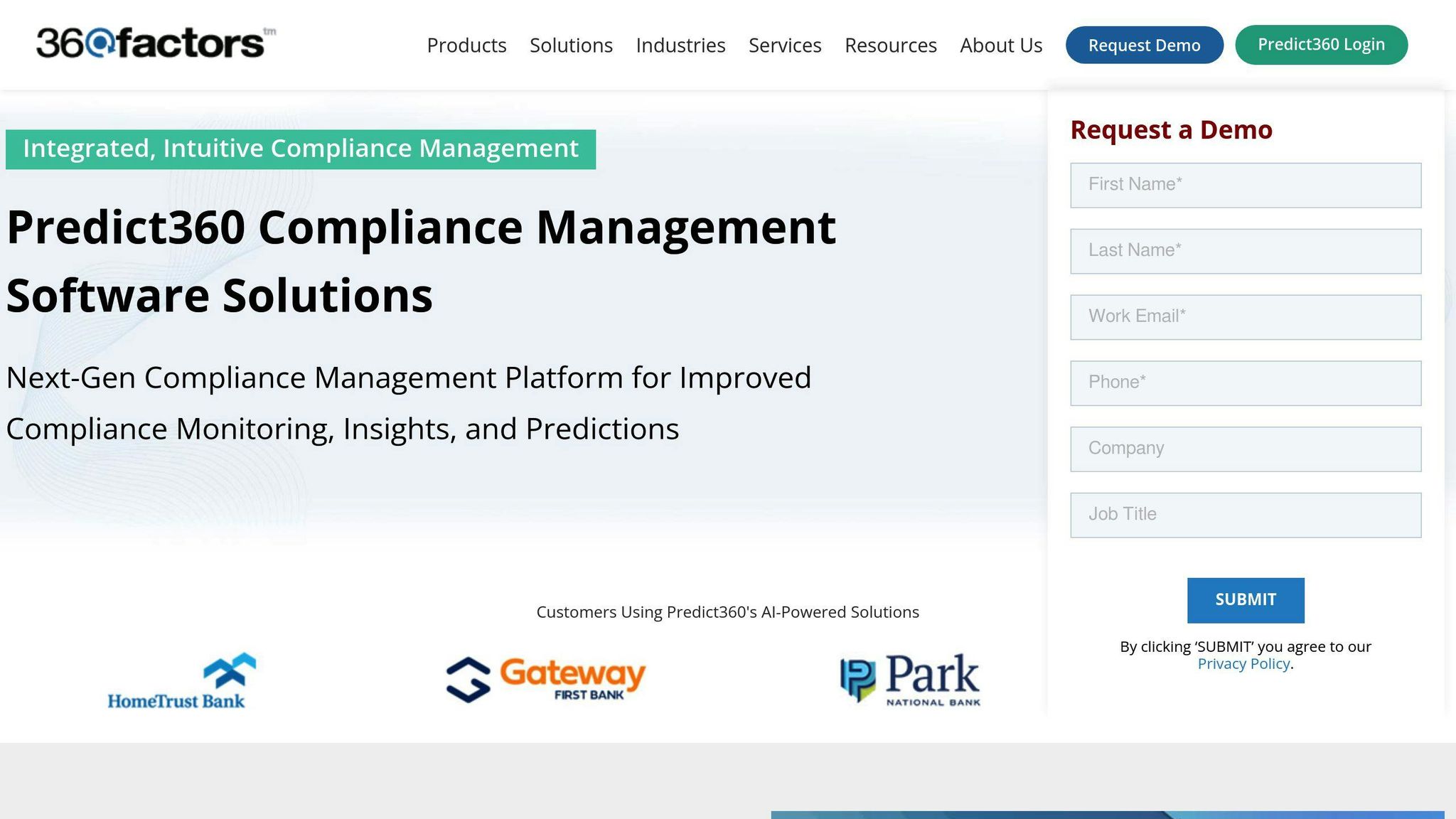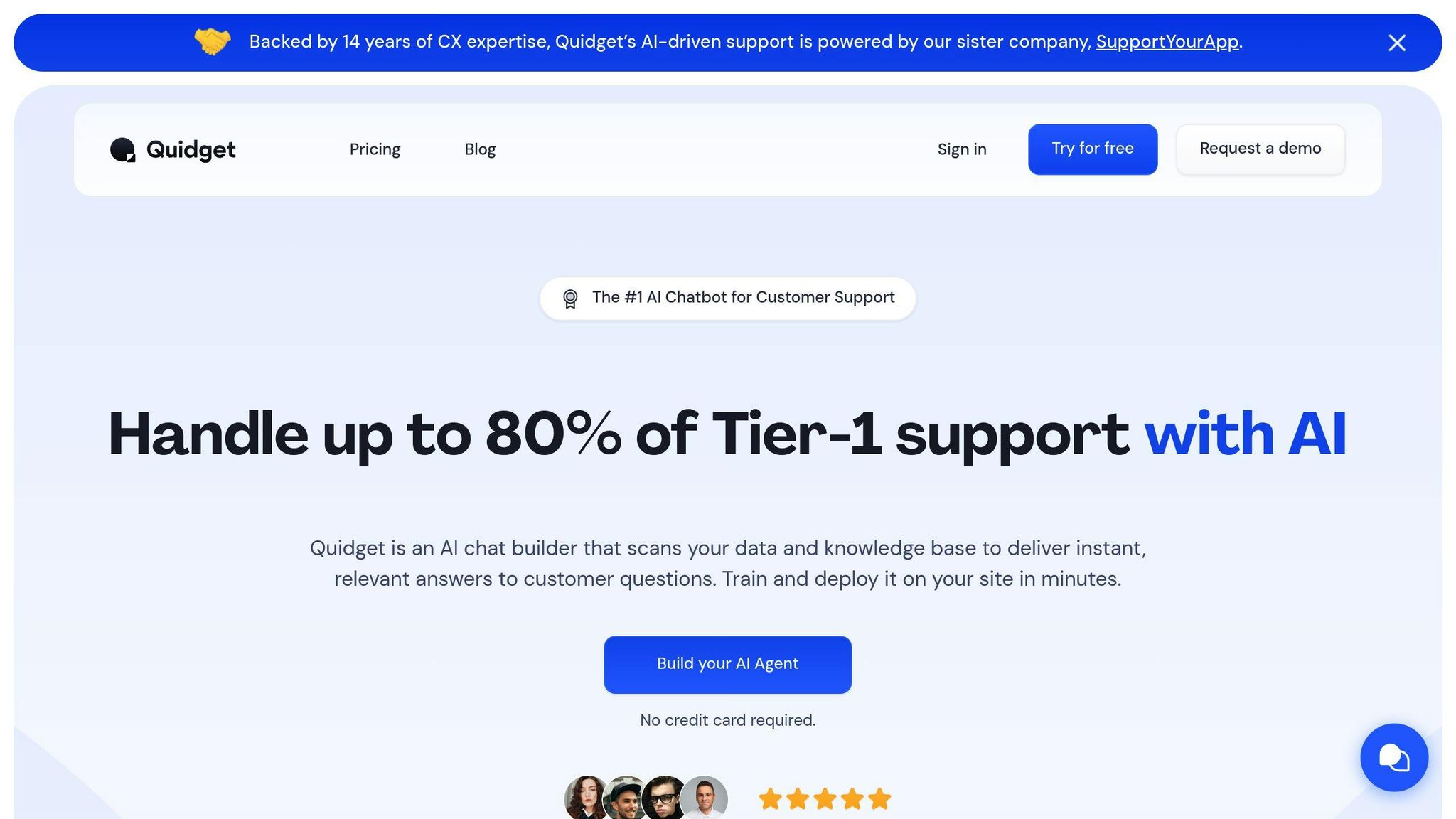AI tools like Risk Spotlight, Predict360, and Quidget are transforming regulatory change management by automating tasks, improving compliance accuracy, and saving time. Here’s a quick breakdown:
- Risk Spotlight: Focuses on real-time monitoring and risk assessment, helping prioritize high-risk areas.
- Predict360: Combines automation with executive insights, offering tools like AI assistant Kaia for regulatory queries.
- Quidget: Excels in automation and multilingual support, handling 80% of compliance queries.
Quick Comparison
| Feature | Risk Spotlight | Predict360 | Quidget |
|---|---|---|---|
| Automation Level | High (Risk-focused) | Medium (Insights) | Very High (80% tasks) |
| Integration | Basic systems | Advanced dashboards | Multi-platform |
| Language Support | Limited | Standard | 80+ languages |
| Scalability | Limited by scope | Scales with volume | Scales efficiently |
AI offers faster compliance, better risk detection, and reduced manual effort. However, it requires updates, human oversight, and data security measures. Balancing automation with human expertise is key to navigating complex regulations effectively.
AI in Regulatory Compliance and Predictive Analytics
1. Risk Spotlight Features

Risk Spotlight is a standout platform in the world of regulatory change management, designed to simplify compliance processes with a range of specialized tools.
At its core, the platform features an automated monitoring system that keeps an eye on regulatory updates from various jurisdictions. With the help of machine learning, it evaluates these updates and determines their potential impact on compliance.
Another key feature is its risk assessment framework, which uses AI to identify high-risk areas. This allows compliance teams to focus on what matters most and allocate resources more effectively.
| Core Capability | Function | Business Impact |
|---|---|---|
| Real-time Monitoring | Tracks regulatory updates continuously | Speeds up responses to new regulations |
| Risk Assessment Tools | Analyzes compliance risks with AI | Enhances accuracy in identifying key risks |
| Customizable Workflows | Creates tailored compliance processes | Fits specific industry and organizational needs |
| System Integration | Works with GRC and CRM platforms | Simplifies compliance across existing systems |
| Scalability | Manages large volumes of data | Supports business growth and expansion |
Risk Spotlight also integrates seamlessly with GRC and CRM platforms, creating a unified compliance process. This approach ensures consistency while remaining adaptable to different industries, regions, and business units.
Although Risk Spotlight shines with its real-time monitoring and integration capabilities, other platforms, such as Predict360, bring their own strengths to regulatory compliance management.
2. Predict360 Features

Predict360 stands out by combining automation and executive-level insights to tackle regulatory challenges effectively. This AI-driven solution simplifies regulatory change management by instantly analyzing updates from multiple sources, saving time and effort.
One of its standout tools is Kaia, an AI compliance assistant. Kaia provides quick, accurate answers to regulatory questions, eliminating the need for manual research.
Here’s a closer look at its key features:
| Feature Category | Capabilities | Business Impact |
|---|---|---|
| Automated Analysis | AI-powered review of regulatory changes and impact | Cuts manual work by up to 70% |
| Smart Notifications | Real-time alerts about policy implications | Speeds up responses to regulatory updates |
| Risk Mapping | Automatic evaluation of how changes affect business units | Boosts compliance accuracy by up to 90% |
The platform also includes project management tools that automate task assignments and tracking for regulatory updates. This ensures nothing slips through the cracks.
An executive dashboard provides a clear, real-time view of compliance risks and progress, helping leaders address concerns before they escalate. By doing so, Predict360 transforms compliance from a reactive task into a proactive approach.
Additionally, Predict360 integrates smoothly with existing GRC tools, streamlining workflows and maintaining efficiency even when managing large volumes of regulatory data.
While Predict360 offers a comprehensive solution for regulatory change management, other platforms like Quidget bring their own specialized features to the table.
sbb-itb-58cc2bf
3. Quidget Features

Quidget uses AI-driven automation to simplify regulatory change management. It automates 80% of compliance queries, offering support in multiple languages to deliver accurate, consistent information across various regions.
While Risk Spotlight focuses on risk assessment and Predict360 emphasizes executive insights, Quidget stands out by prioritizing automation and ease of use for routine compliance tasks. Here’s a breakdown of its key features:
| Feature | Regulatory Use | Business Benefit |
|---|---|---|
| Knowledge Base Training | AI processes regulatory documents and policies | Delivers consistent and accurate compliance answers |
| Multi-Language Support | Manages queries in over 80 languages | Simplifies global compliance efforts |
| Automated Escalation | Directs complex cases to human experts | Ensures accuracy for high-priority issues |
| 24/7 Availability | Offers immediate access to regulatory data | Speeds up responses to compliance inquiries |
The platform’s integration with tools like Zendesk and Euphoric.ai strengthens its ability to connect AI with human expertise, ensuring smooth collaboration for more complex regulatory challenges.
Quidget is designed to handle frequent regulatory updates with ease, integrating new rules without requiring major adjustments. It also scales efficiently during high-demand periods, keeping operations compliant while managing costs. This flexibility makes it possible to deliver timely and precise compliance updates.
Although Quidget shines in automation and accessibility, its value is amplified when paired with human expertise in broader compliance strategies.
Advantages and Drawbacks of AI Tools
Using AI tools in regulatory change management offers both opportunities and challenges. Industry data shows that AI-powered solutions can cut SME time from days to minutes, boosting efficiency by up to 20 times compared to manual compliance reviews.
Here’s a comparison of three popular tools across key performance metrics:
| Feature | Risk Spotlight | Predict360 | Quidget |
|---|---|---|---|
| Automation Level | High – Risk assessment | Medium – Executive insights | Very High – 80% automation |
| Accuracy | Strong risk detection | Advanced analytics | High with KB training |
| Scalability | Limited by scope | Scales with volume | Efficient query handling |
| Integration | Basic systems | Advanced dashboards | Multi-platform |
| Language Support | Limited | Standard | 80+ languages |
Key Advantages
- Time savings: AI automates tasks like horizon scanning and impact analysis, drastically cutting down manual effort.
- Improved risk detection: Machine learning algorithms identify patterns in regulatory data, helping spot potential violations early.
- Faster document reviews: Natural Language Processing (NLP) speeds up the analysis of complex regulatory documents.
Notable Drawbacks
- Over-reliance risks: AI might miss subtle regulatory language or jurisdiction-specific details.
- Ongoing maintenance: These tools need regular updates to stay effective and come with high initial costs and training requirements.
- Data security concerns: Safeguarding sensitive information while ensuring audit transparency is critical.
"While regulation can ensure the ethical and safe use of AI, it must be balanced to avoid stifling innovation and creating economic or global disparities." – Development Aid
The success of AI tools depends on how well they’re integrated into an organization’s overall compliance strategy. Combining automation with human expertise is essential for achieving the best results. For instance, AI can handle repetitive tasks, but human judgment is still needed for interpreting complex regulatory nuances.
Balancing automation with human oversight is particularly important when dealing with cross-border regulations and multiple jurisdictions. Organizations must also ensure strict control over sensitive information while maintaining transparency for audits. Ultimately, adopting AI for regulatory change management requires carefully weighing these pros and cons within the context of the organization’s specific needs.
Final Thoughts
AI is reshaping how organizations handle regulatory change management, offering better efficiency and accuracy. These tools are changing the game by simplifying how businesses tackle compliance challenges.
Choosing the right tool is essential. For example, Risk Spotlight focuses on risk assessment, Predict360 provides insights for executives, and Quidget offers extensive automation and multilingual support. The key is aligning these features with your organization’s specific needs, such as automation preferences, language capabilities, and how well the tool integrates with existing systems.
"Leveraging AI marks a watershed moment for organizations seeking a proactive and efficient approach to regulatory change management programs." – 4Crisk, Regulatory Technology Solutions Provider
To use AI effectively, organizations must establish strong governance, keep systems updated, and implement clear oversight protocols. This ensures transparency and accountability. By combining these practices with AI’s evolving capabilities, businesses can navigate the increasingly complex world of regulations more effectively.
The future of compliance management is moving toward data-driven, automated solutions, but human oversight will remain crucial. Tools like Risk Spotlight, Predict360, and Quidget are advancing to address new challenges, helping organizations create more flexible and responsive compliance strategies. This not only helps them stay ahead of regulatory changes but also makes better use of resources.
A balanced approach – leveraging both AI technology and human expertise – will be key. Organizations that embrace this combination will be well-prepared to maintain strong compliance programs, even as regulations grow more complex.



